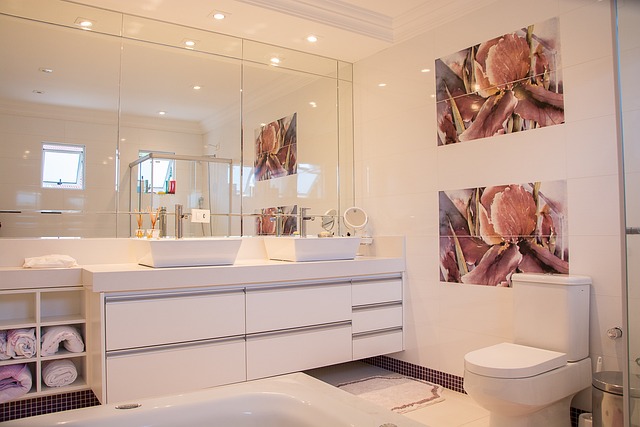Bathroom Mirrors: Reflecting Style and Functionality
Bathroom mirrors are often overlooked as mere functional necessities, but they play a crucial role in both the aesthetics and practicality of bathroom design. These reflective surfaces have come a long way from simple utilitarian objects to become statement pieces that can transform the entire look and feel of a bathroom. From ornate antique frames to sleek, modern designs with integrated lighting, bathroom mirrors have evolved to meet the changing needs and tastes of homeowners. They serve multiple purposes, from aiding in personal grooming to creating the illusion of more space in smaller bathrooms. As such, choosing the right mirror for your bathroom is an important decision that can significantly impact the overall ambiance and functionality of the space.

As manufacturing techniques improved in the 20th century, larger and clearer mirrors became more accessible to the general public. This coincided with the rise of the modern bathroom as we know it today. Mirrors began to be seen not just as practical tools but as design elements that could enhance the appearance of the bathroom.
Shapes and Styles: Beyond the Rectangle
While rectangular mirrors remain popular, there has been a surge in interest for more diverse shapes and styles. Round mirrors, for instance, have gained significant traction in recent years. Their soft, circular form can provide a striking contrast to the often angular lines found in bathrooms, creating a focal point that draws the eye.
Oval mirrors offer a similar softening effect but with a more elongated shape that can be particularly flattering for personal grooming. For those looking to make a bold statement, asymmetrical or irregularly shaped mirrors can add a unique, artistic touch to the bathroom.
Another trend gaining popularity is the use of multiple smaller mirrors in place of one large one. This approach allows for more creativity in arrangement and can add visual interest to the wall space.
Technological Advancements in Mirror Design
Modern bathroom mirrors have embraced technology to offer enhanced functionality. LED-integrated mirrors have become increasingly popular, providing even, flattering light for grooming tasks. Some models offer adjustable color temperature, allowing users to switch between warm and cool lighting to suit different needs or times of day.
Smart mirrors take this a step further, incorporating features like built-in displays for weather updates, news headlines, or even video playback. Some models include anti-fog technology, ensuring the mirror remains clear even after a steamy shower.
For those concerned with energy efficiency, there are now mirrors with motion sensors that automatically turn on the lights when someone approaches and off when they leave. This not only saves electricity but also adds a touch of luxury to the bathroom experience.
Framed vs. Frameless: Aesthetic Considerations
The choice between framed and frameless mirrors can significantly impact the overall look of a bathroom. Framed mirrors offer an opportunity to introduce additional design elements and can complement the existing decor. For instance, a mirror with a rustic wooden frame can enhance a farmhouse-style bathroom, while an ornate gilded frame might suit a more opulent, traditional space.
Frameless mirrors, on the other hand, offer a sleek, modern look that can make a bathroom feel more spacious. They’re particularly well-suited to minimalist or contemporary design schemes. Frameless mirrors can also be easier to clean, as there are no crevices where dust and grime can accumulate.
Some homeowners opt for a compromise with partially framed mirrors, which feature frame elements on only part of the mirror’s edge. This can create an interesting visual effect while still maintaining a sense of openness.
Positioning and Placement for Maximum Impact
The placement of bathroom mirrors is crucial not only for functionality but also for enhancing the perception of space and light in the room. A common technique is to position a large mirror opposite a window, which reflects natural light and can make the bathroom feel brighter and more open.
For vanities with double sinks, individual mirrors above each sink can create a sense of personal space, while a single large mirror spanning both sinks can unify the area and make it feel more expansive.
In smaller bathrooms, strategically placed mirrors can create the illusion of more space. For example, a full-length mirror on one wall can visually double the perceived size of the room.
Sustainability and Eco-Friendly Options
As environmental concerns become more prominent, there’s growing interest in sustainable and eco-friendly mirror options. Some manufacturers are now producing mirrors using recycled glass or sustainable materials for frames.
Additionally, the energy-efficient LED lighting integrated into many modern mirrors can help reduce overall energy consumption. Some companies are taking this a step further by incorporating solar-powered elements into their mirror designs, particularly for outdoor or well-lit bathroom spaces.
For those looking to reduce waste, there are also options for refurbishing or upcycling old mirrors. This can involve re-silvering the glass surface or updating the frame, giving new life to an existing piece rather than purchasing a new one.
In conclusion, bathroom mirrors have evolved far beyond their basic reflective function. They now serve as key design elements that can dramatically influence the look, feel, and functionality of a bathroom. From shape and style to technological features and sustainable options, the choices available to homeowners are vast. By carefully considering these factors, it’s possible to select a mirror that not only meets practical needs but also enhances the overall aesthetic of the bathroom space.






